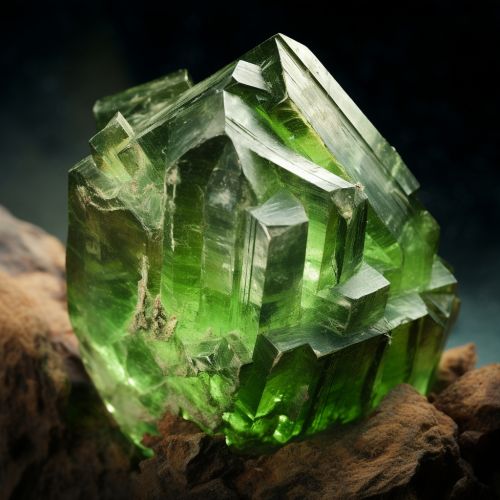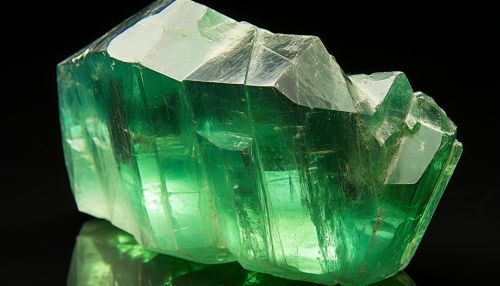Beryl
Introduction
Beryl is a mineral composed of beryllium aluminium cyclosilicate. The chemical formula is Be3Al2(SiO3)6. Well-known varieties of beryl include emerald and aquamarine. Naturally occurring, hexagonal crystals of beryl can be up to several meters in size, but terminated crystals are relatively rare. Pure beryl is colorless, but it is frequently tinted by impurities; possible colors are green, blue, yellow, red, and white.
Physical and Chemical Properties
Beryl belongs to the hexagonal crystal system and usually forms hexagonal prisms. The mineral is quite hard, with a Mohs hardness of 7.5 to 8. The specific gravity is usually in the range of 2.6 to 2.8, depending on the amount and type of impurities present. Beryl is resistant to weathering and shock, but it can be brittle and its crystals can be split along their length.
The color of beryl is often pale, but it can be enhanced by heat treatment. The mineral is also pleochroic, meaning it can display different colors when viewed from different angles. This property is especially pronounced in dark specimens.
Beryl is insoluble in acids and neither melts nor boils at standard pressure. Instead, it sublimates when subjected to high temperatures. The mineral is a poor conductor of electricity, but it can become a semiconductor when impurities are present.
Occurrence and Mining
Beryl is found in granitic pegmatites and in certain metamorphic rocks. It occurs in large, hexagonal crystals which can be up to several meters long. However, such large crystals are rare and most commercially mined beryl is much smaller.
The largest producer of beryl is Brazil, but significant amounts are also mined in Colombia, Russia, Ethiopia, and Madagascar. In the United States, beryl is found in California, Colorado, Connecticut, Maine, New Hampshire, North Carolina, South Dakota, and Utah.
Beryl is mined in a variety of ways depending on the local conditions. Most beryl is mined from granitic pegmatites using open-pit methods. In some cases, underground mining is used, especially when the mineral occurs in veins.
Varieties and Uses
The most famous varieties of beryl are emerald and aquamarine. Emerald is green because of chromium or vanadium impurities, while aquamarine is blue to greenish-blue because of iron impurities. Other varieties include maxixe (deep blue), morganite (pink to orange), heliodor (yellow to greenish yellow), and goshenite (colorless).
Beryl is used primarily as a gemstone. The different varieties are valued for their color and clarity. Emerald is the most valuable variety, followed by aquamarine. Other varieties are much less valuable, but they can still command high prices because of their beauty.
In addition to its use as a gemstone, beryl is also an important industrial mineral. It is the primary source of beryllium, which is used in the manufacture of a variety of products, including aircraft, missiles, and communication satellites.
See Also


